Search
Search Results
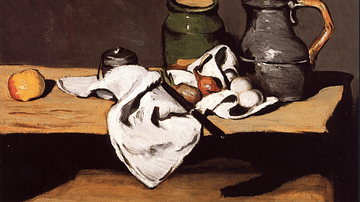
Image
Still Life with Green Pot & Pewter Jug
A c. 1867-9 painting in oils, Still Life with Green Pot and Pewter Jug, by Paul Cézanne (1839-1906), the French post-impressionist artist. This is an excellent example of Cézanne's approach to still life in the first part of his career where...
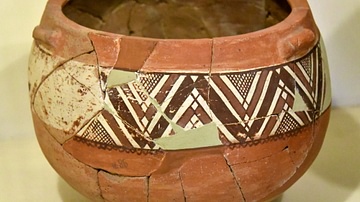
Image
Pot from Bogazkoy
Terracotta pot, from the city of Boğazköy, central Anatolia, in modern-day Turkey. 7th to 6th century BCE. (Museum of Archaeology, Istanbul, Turkey).
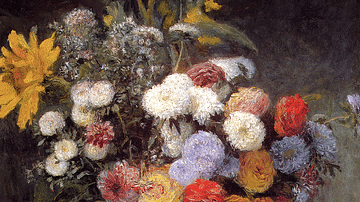
Image
Mixed Flowers in an Earthenware Pot by Renoir
An 1869 oil on canvas still-life, A Vase of Flowers, by Pierre-Auguste Renoir (1841-1919) the French impressionist painter. Renoir was keenly interested in painting flowers throughout his career and found the exercise relaxing.
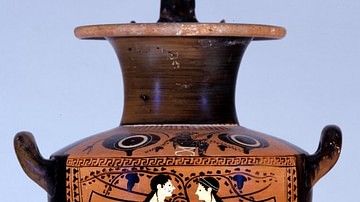
Definition
Ancient Greek Pottery
Greek pottery has four main types: Geometric, Corinthian, Athenian Black-figure, and Athenian red-figure pottery. Pottery vessels were made for everyday use such as the two-handled amphora for storage, the single-stem kylix cup for drinking...
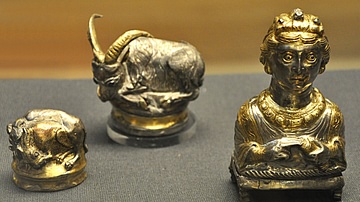
Image
Hoxne Hoard Pepper Pot
Items from the Hoxne Hoard including the 7.5 cm high silver pepper pot known as the 'Empress' pepper pot. Discovered in Suffolk, in the east of England in 1992 CE, the incredible collection contains 14,865 late-4th and early-5th century...
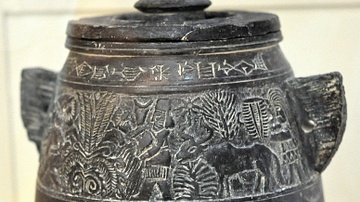
Image
Basalt Pot
This pot (and its cap) was made of basalt and was probably used for votive purposes. There are cuneiform inscriptions on the upper side of the pot. Below the cuneiform inscriptions, there is a scene depicting a man pouring water on a tree...
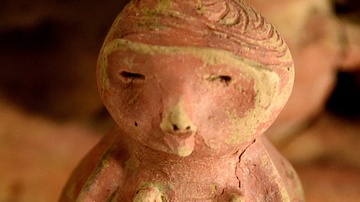
Image
Egyptian Anthropomorphic Pot
This is a redware pot. It depicts a woman with breasts and arms; she holds a spout (which is lost). There is a hole at the back of the pot for filling. From Egypt. Middle Kingdom, 2061 to 1690 BCE. The Petrie Museum of Egyptian Archaeology...

Article
Sioux Life Lessons: Iktomi and the Muskrat & Iktomi's Blanket
The Sioux stories known as Iktomi tales concern the trickster figure Iktomi (also known as Unktomi) who appears, variously, as a hero, sage, villain, clown, inept buffoon – or in other roles – but always serves to illustrate some important...
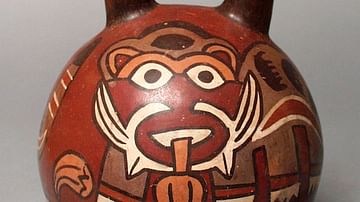
Image
Nazca Double-spouted Pot
A typical double-spouted pot with handle of the Nazca civilization of ancient Peru (200 BCE-500 CE). The design is also typical of Nazca art: Bold lines and colours, often depicting mythical transformational creatures. (Los Angeles County...
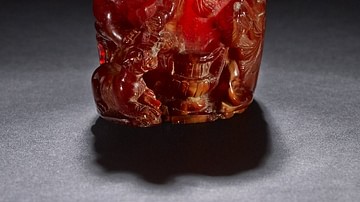
Image
Roman Amber Perfume-pot
A perfume-pot made from amber and depicting cupids and a panther. Roman, Aquileia, 100-120 CE. (British Museum, London)